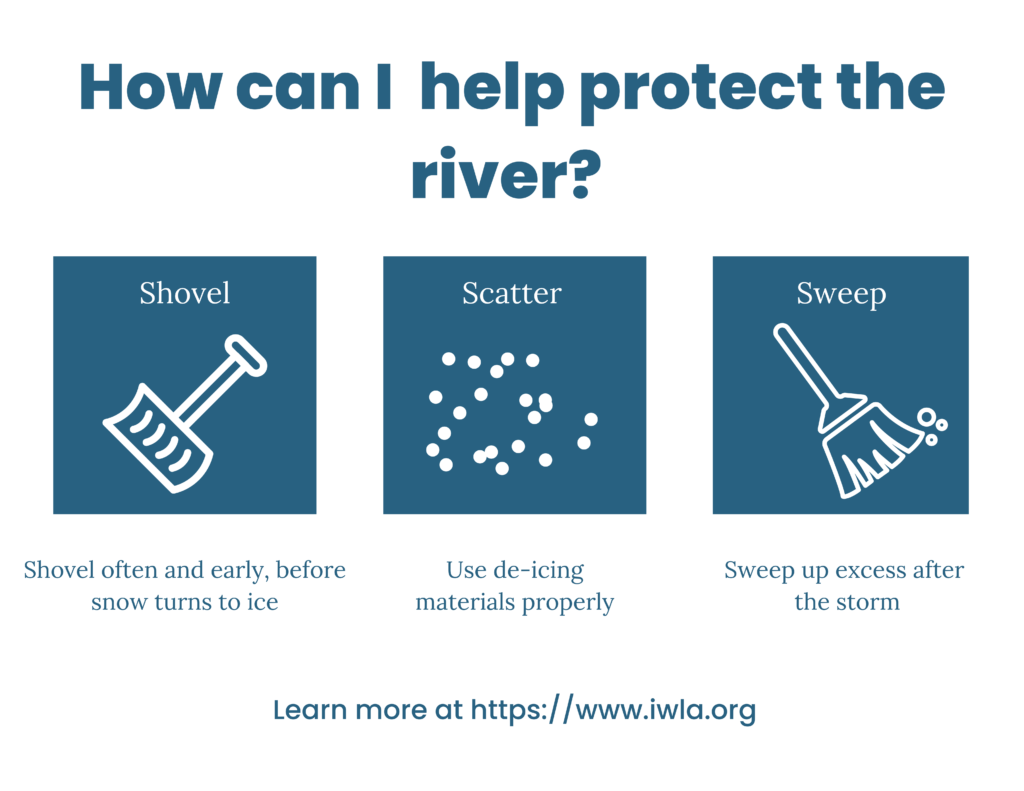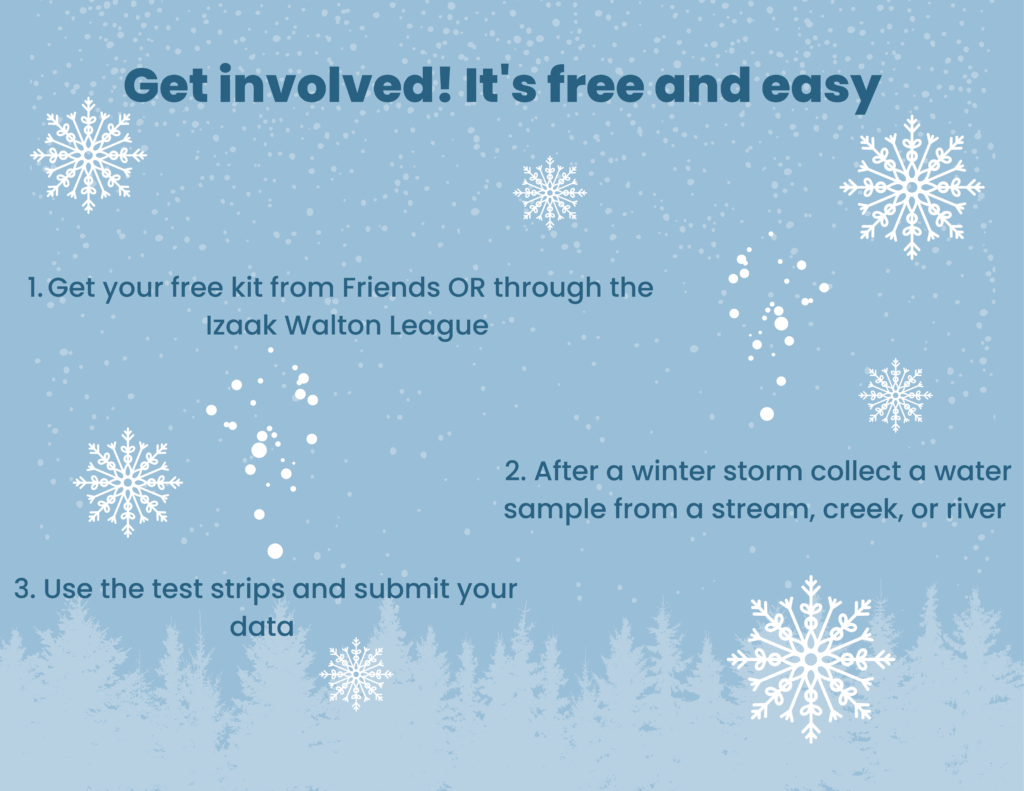Friends of the North Fork of the Shenandoah River is current hiring a new Executive…
Salt Watch 2023
As we enter the depths of winter, many of us long for sunshine and days spent on the river. While there are many ways to connect with the river and nature during winter, reviewing your snow and ice removal methods is one way to have a direct, positive impact on the river that carries on through the year. Using salts and other chemicals is one effective way to keep sidewalks and roadways clear, but what happens to all that salt when the storm has passed? Everything gets washed away down to the creeks and streams, raising the salinity of our freshwater resources. Now, a little salt doesn’t seriously impact the flora and fauna. But the cumulative effect has intense consequences, especially for the pollution sensitive benthic macroinvertebrates (BMIs). And it’s these BMIs that support the food web of fish, amphibians, birds, mammals, and reptiles that we all enjoy interacting with and seeing while we’re on the river.
One way that Friends’ is connecting with the river during winter is with our Salt Watch program through the Izaak Walton League, it’s free and easy and you can do it too! Get your free kit, you can pick it up from the Friends’ Office, and then using the test strips you can measure the amount of chloride in the water before and after a storm. These strips are easy to use and it’s easy to share your results. There is a small amount of naturally occurring chloride in our water; but this level increases, sometimes drastically, after a storm and extra road salt gets washed down into the river. High levels of chloride negatively affect BMIs and other flora and fauna in the river, and by measuring the chloride levels in winter we can more thoroughly assess our impact on the river and make better decisions in the future.
So what can we do? As storms move through the valley this winter season stay on top of snow removal as much as you can, shoveling and sweeping surfaces to prevent build up. Follow the manufacturers recommendations when applying de-icing salts and chemicals and use only what you need. And finally, after the storm has passed and your surfaces are clear, sweep up any remaining salts or sand and prevent excess material from entering our water resources. Now, let’s go enjoy what’s left of winter!


